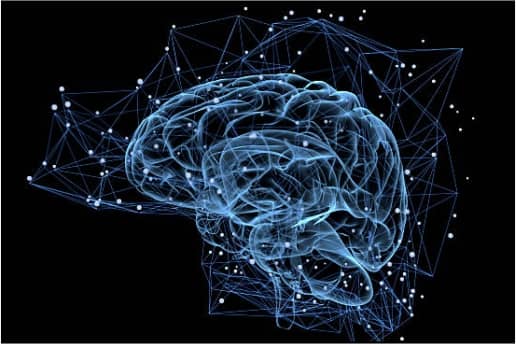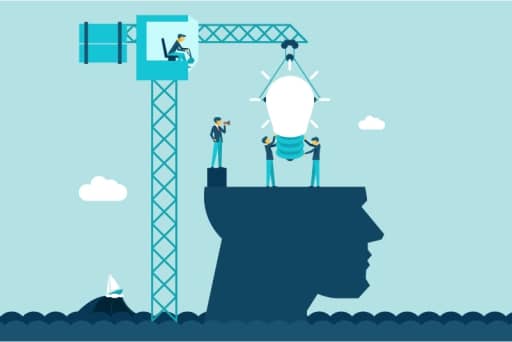
The Agile Mindset: How to Foster Collaboration and Innovation in Your Team
In today’s fast-paced business environment, agility is becoming increasingly important. With changing customer needs and evolving market dynamics, organizations need to be flexible and adaptable to stay competitive. This is where the Agile mindset comes in – an approach that emphasizes collaboration, customer-centricity, and continuous improvement.
In this article, we will explore the characteristics of an Agile mindset, how to develop an agile mindset, the benefits of adopting it, and how to foster it in your team. We will also discuss the challenges you may face in adopting an Agile mindset and provide some strategies for overcoming them.
What is an agile mindset?
The Agile mindset is a way of thinking that emphasizes collaboration, iteration, and continuous improvement. It is based on the principles of the Agile manifesto, which was created in 2001 by a group of software developers who were looking for a better way to work. Since then, the Agile methodology has been adopted by a wide range of industries, including marketing, finance, and healthcare.
What are the Characteristics of an Agile Mindset
Before asking the question, how do you bring an agile mindset to a team or how to develop an agile mindset for team collaboration, you must first understand the features made available by agile. Here are some of them:
- Flexibility
An Agile mindset is characterized by a willingness to change course when necessary. It means being open to new ideas and approaches, even if they challenge your existing assumptions. This flexibility allows teams to adapt quickly to changing customer needs and market conditions.
- Adaptability
Adaptability is closely related to flexibility. It means being able to adjust to new situations and environments without losing focus on your goals. An Agile mindset allows teams to pivot quickly and make necessary changes to their processes and strategies.
- Openness to Change
An Agile mindset requires a willingness to embrace change. This means being open to new ideas, even if they challenge your existing beliefs. It also means being willing to experiment and take risks, knowing that failure is an inevitable part of the learning process.
- Customer-centricity
An Agile mindset is focused on the customer. It means understanding their needs and preferences and designing products and services that meet those needs. This customer-centric approach allows teams to create products that are more likely to succeed in the market.
- Continuous Improvement
Continuous improvement is a key tenet of the Agile mindset. It means constantly looking for ways to improve your processes, products, and services. This approach allows teams to deliver higher quality work and stay ahead of the competition.
What are the key principles of Agile methodology?
Knowing how to develop an agile mindset starts with understanding the key principles of agile methodology. There are 12 principles in number. They include:
- Customer satisfaction through early and continuous delivery of valuable software
This principle emphasizes the importance of delivering working software that provides value to the customer as early and frequently as possible. By prioritizing customer satisfaction, Agile teams can ensure they are meeting the customer’s needs and delivering value quickly.
- Embracing change
Agile teams recognize that change is inevitable in any project and embrace it as an opportunity to improve. They prioritize flexibility and adaptability, adjusting their approach as needed based on feedback and insights.
- Delivering working software frequently
Rather than waiting until the end of a project to deliver working software, Agile teams prioritize frequent delivery to ensure that progress is being made and that the customer is receiving value as early as possible.
- Collaboration between business stakeholders and developers
Agile methodology emphasizes the importance of close collaboration between business stakeholders and developers to ensure that everyone is aligned and working towards the same goals.
- Building projects around motivated individuals
Agile methodology recognizes the importance of motivated individuals in driving the success of a project. By prioritizing motivation and engagement, Agile teams can achieve greater results.
- Face-to-face communication
Agile methodology values face-to-face communication over written documentation, as it promotes more effective collaboration, faster decision-making, and better problem-solving.
- Working software as a primary measure of progress
Rather than measuring progress based on documentation or other metrics, Agile methodology prioritizes working software as the primary measure of progress.
- Sustainable development pace
Agile teams prioritize sustainable development pace to avoid burnout and ensure that team members can maintain a healthy work-life balance.
- Continuous attention to technical excellence and good design
Agile methodology recognizes the importance of technical excellence and good design in creating sustainable software that is easy to maintain and improve over time.
- Simplicity
Agile teams prioritize simplicity in their approach to software development, avoiding unnecessary complexity and focusing on delivering the most value with the least amount of effort.
- Self-organizing teams
Agile methodology values self-organizing teams that are empowered to make decisions and take ownership of their work. By promoting autonomy and self-direction, Agile teams can achieve greater results.
- Regular reflection and adaptation
Agile teams prioritize regular reflection and adaptation to continuously improve their approach and ensure they are delivering the best possible outcomes. By reflecting on what worked well and what didn’t, Agile teams can make adjustments and refine their approach over time.
What are the Benefits of Adopting an Agile Mindset?
Organizations that strive for agility stand to reap a lot of benefits, translating to increased workplace productivity and satisfied team members. Some of these benefits are:
- Enhanced Collaboration
Enhancing team performance with agile mindset is one of the most important benefits of the agile methodology as it fosters collaboration among team members. By breaking down silos and encouraging cross-functional teams, it allows individuals to share their skills and expertise, leading to better solutions and more innovative ideas.
The agile mindset enhances team collaboration through these avenues:
i. Emphasis on Teamwork
Agile methodology places a high emphasis on teamwork. Teams work together to complete tasks and reach goals, with each member contributing their unique skills and expertise. This approach fosters a sense of camaraderie and helps build trust among team members.
ii. Increased Communication
Communication is key to success in an Agile environment. Regular check-ins and feedback sessions help keep everyone on the same page, while clear expectations and goals ensure that everyone understands their role in the project.
iii. Improved Trust
Trust is essential in an Agile environment. By fostering an environment of collaboration and openness, teams can build trust among team members, leading to better working relationships and higher quality work.
- Improved Innovation
Adopting an Agile mindset can lead to more innovative solutions. By encouraging experimentation and iteration, teams are free to explore new ideas and approaches, leading to better products and services.
But, how does having an agile mindset improve innovation?
i. By Encouraging Creativity
Creativity is essential in an Agile environment. By providing teams with the freedom to experiment and try new things, they are more likely to come up with creative solutions to complex problems. This approach allows teams to think outside the box and generate new ideas that may not have been possible in a more traditional, rigid environment.
ii. By Ensuring Faster Time-to-Market
Adopting an Agile mindset can also lead to faster time-to-market. By prioritizing collaboration and iteration, teams can quickly test and refine their products, allowing them to get them to market faster. This approach can be particularly valuable in fast-moving industries where speed is critical to success.
- Improved Customer Satisfaction
When considering how to develop an agile mindset, you must factor in the customer. An Agile mindset is focused on the customer. By prioritizing their needs and preferences, teams can deliver products and services that better meet their needs, leading to higher customer satisfaction.
The agile mindset promotes improved customer satisfaction by ensuring:
i. Customer-Centricity
An Agile mindset is focused on the customer. By prioritizing their needs and preferences, teams can design products and services that better meet their needs. This approach can lead to higher customer satisfaction, as customers feel that their needs are being heard and addressed.
ii. Iterative Feedback Loops
Agile methodology prioritizes regular feedback loops with customers. This approach allows teams to quickly gather feedback on their products and services, allowing them to make necessary changes and improvements. By continually iterating based on customer feedback, teams can deliver products and services that better meet their needs.
How to Develop an Agile Mindset in Your Team
To develop an agile mindset, there are certain things to bear in mind. Remember, it is a slow and gradual journey; but the end results are satisfying.
Here are some steps to foster an agile mindset in your team.
- Emphasize Collaboration
To foster an Agile mindset in your team, emphasize collaboration. Encourage cross-functional teams and break down silos to allow individuals to share their skills and expertise. Encourage regular check-ins and feedback sessions to keep everyone on the same page.
- Encourage Experimentation
Another tip on how to develop an agile mindset in your team is by encouraging experimentation and iteration. Provide your team with the freedom to explore new ideas and approaches, and support them in taking risks and trying new things.
- Prioritize Continuous Improvement
Prioritize continuous improvement in your team. Encourage them to constantly look for ways to improve their processes, products, and services. Provide them with the tools and resources they need to make necessary changes and improvements.
- Foster a Customer-Centric Culture
Foster a customer-centric culture in your team. Prioritize understanding customer needs and preferences, and design products and services that meet those needs. Encourage regular feedback loops with customers to gather insights and refine your products and services.
- Lead by Example
As a leader, it’s important to lead by example. Embrace an Agile mindset yourself and demonstrate the benefits of this approach to your team. Encourage them to ask questions and challenge assumptions, and provide them with the support they need to adopt an Agile mindset.
What are the Challenges to Developing an Agile Mindset in your team?
As mentioned earlier, introducing changes in your team won’t come without challenges. Here are the three biggest challenges you may face and tips to overcome them.
- Resistance to Change
Resistance to change is one of the biggest challenges in adopting an Agile mindset. To overcome this, provide your team with the necessary training and support to help them understand the benefits of this approach. Communicate clearly about why you are adopting an Agile mindset and how it will benefit the team and the organization.
- Lack of Buy-In
Lack of buy-in is another challenge in adopting an Agile mindset. To overcome this, involve your team in the decision-making process and listen to their concerns. Provide them with opportunities to share their ideas and contribute to the process.
- Lack of Resources
A lack of resources can also be a barrier to adopting an Agile mindset. To overcome this, prioritize the resources that are most critical to the success of the project. Provide your team with the tools and resources they need to be successful, and be willing to make adjustments as necessary.
Last Words
The Agile mindset is a powerful tool for fostering collaboration and innovation in your team. By adopting this approach, you can create a culture of continuous improvement and customer-centricity that will help you stay competitive in today’s fast-paced business environment. Remember that adopting an Agile mindset is not a one-time event but rather a continuous journey. It requires ongoing commitment and effort from everyone on the team. With that said, the benefits of an Agile mindset are worth the investment.
As you begin to implement an Agile mindset in your team, it’s important to start small and gradually scale up. You don’t need to adopt every aspect of Agile methodology all at once. Instead, start with a few key principles and build from there. This will allow you to test and refine your approach over time, and adjust as necessary based on the unique needs of your team and your organization.
In addition, it’s important to recognize that an Agile mindset is not a one-size-fits-all solution. Every team and organization is different, and what works for one may not work for another. As such, it’s important to remain flexible and adaptable in your approach, and to be willing to adjust your approach based on the feedback and insights you receive from your team and your customers.
Finally, remember that the success of your Agile mindset will depend on your ability to foster a culture of trust, transparency, and open communication within your team. By creating an environment where individuals feel safe to share their ideas and opinions, you can unleash the full potential of your team and achieve your goals with greater speed and agility.
Are you ready to adopt an Agile mindset and unlock the full potential of your team? Then, take the first step today and begin your Agile journey by reaching out to a trusted partner to answer every questions you might have about Agile and its implementation process!


